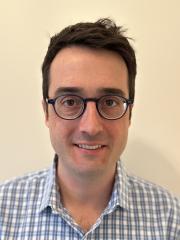The University of Michigan rolled out GE HealthCare’s automated low flow anesthesia software, End-tidal control, to more than 500 providers (faculty, residents, and CRNAs) across its 140 anesthetizing locations spanning three academic hospitals and three ambulatory care sites.
Dave Hovord, BA, MB, BChir, FRCA, Director of the University’s Equipment and Supply Program, explains that they selected End-tidal Control* for three main reasons: patient safety, the department’s Green Anesthesia Initiative, and economics.
In this final video of our three-part series, Hovord discusses the challenges and results, and offers reflections on lessons learned, notably overcoming physician wariness and “new tech anxiety.”
Key takeaways:
- The University of Michigan previously used a lot of iso/nitrous combination with minimal desflurane and some sevoflurane – which would have doubled annual gas costs without changing flows
- Instead, they switched to sevoflurane from nitrous, isoflurane, desflurane, and reduced CO2e use by more than 90%
- Universally making default flows 0.5l/min, with an average less than 1l/min, also reduced sevoflurane usage by 35%
-
Providers say: “It’s good. I just turn it on.”
*Et Control is indicated for patients 18 years of age and older in the United States.
©2024 GE HealthCare
GE is a trademark of General Electric Company used under trademark license. Reproduction in any form is forbidden without prior written permission from GE HealthCare. Nothing in this material should be used to diagnose or treat any disease or condition. Readers must consult a healthcare professional.
JB29329XX, JB29289XX

Dr. David Hovord
University of Michigan
Dr. David Hovord is a Clinical Assistant Professor of Anesthesiology, specializing in Liver Transplant Anesthesiology. He is the Director of both Multispecialty Anesthesia and the Equipment and Supply Program. He also leads the Green Anesthesia Initiative at Michigan Medicine. Dr. Hovord is passionate about using technology to help improve patient safety in anesthesia and is a member of the Anesthesia Patient Safety Foundation Committee on Technology and the Patient Safety Committee at the University of Michigan. He gained his medical degrees from the Universities of Oxford and Cambridge in the United Kingdom.








